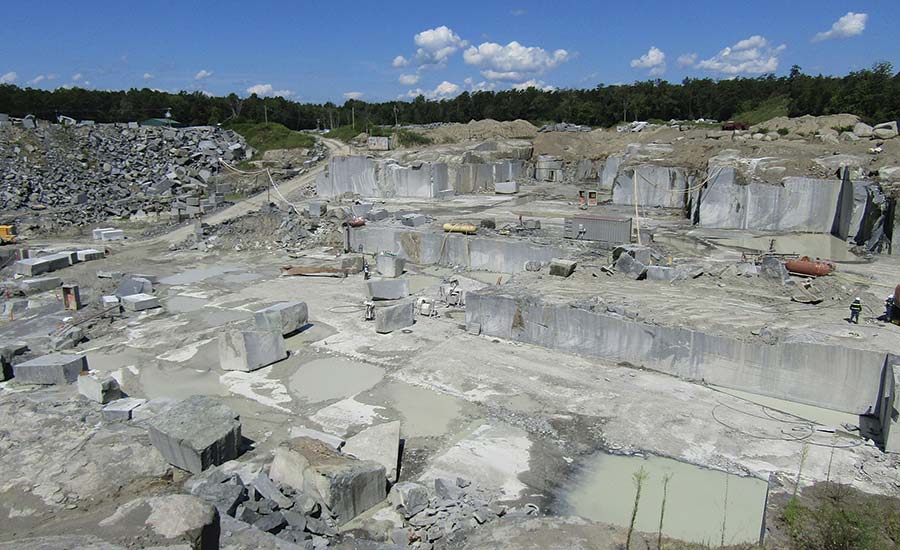Diving into of Granite Quarries in South Africa
Diving into of Granite Quarries in South Africa
Blog Article
Discovering the Rich Background and Lasting Practices of Granite Quarrying
As we depend on the precipice of revealing the elaborate tapestry of granite quarrying, a journey via time exposes not simply the physical act of drawing out rock however also the social and historical importance woven into the extremely material of this practice. From the ancient beginnings that laid the foundation for contemporary quarrying strategies to the lasting techniques that are shaping the future of this sector, each chisel mark on granite surfaces narrates waiting to be discovered (granite quarries in south africa). The heritage of granite quarrying extends far past plain extraction; it is a testament to human resourcefulness, resilience, and the enduring attraction of this impressive stone
Old Beginnings of Granite Quarrying
Dating back to old worlds, the technique of quarrying granite has been an essential part of human background and architectural advancement. The earliest proof of granite quarrying go back to ancient Egypt, where substantial pyramids and complex sculptures were crafted from this sturdy stone. The Egyptians made use of primitive tools to draw out granite blocks from quarries, showcasing the significance of this product in their monumental building and constructions.
Relocating forward in background, the Greeks also made significant payments to the quarrying of granite. The Greeks utilized granite in various building marvels, such as holy places and statues, showing their skill in shaping and carving this durable rock. The Romans additionally improved the methods of quarrying granite, employing sophisticated devices like blades and hammers to essence and form granite for their famous frameworks.
With the centuries, the technique of quarrying granite has actually progressed, with modern-day innovations boosting performance while keeping the timeless allure of this natural rock - granite quarries in south africa. From old civilizations to modern builders, the tradition of granite quarrying continues to form our globe
Advancement of Quarrying Strategies
The advancement of quarrying methods has actually been marked by a continuous progression in the direction of better performance and accuracy in drawing out granite. From the primary approaches used by our forefathers to the sophisticated innovations made use of in modern quarrying procedures, the sector has actually undergone considerable advancements. Early quarrying strategies included manual labor with standard tools such as blades, hammers, and wedges to extract granite blocks from the planet. As people progressed, techniques like fire-setting and primitive nitroglycerins were presented to assist in the removal procedure.
In more current times, the arrival of equipment revolutionized the quarrying sector, enabling faster extraction prices and boosted performance. Technologies such as ruby cable saws, high-pressure water jets, and pneumatic drills have ended up being typical in modern-day quarries, enabling exact cutting and lowered waste. Advancements in computer-controlled devices and 3D modeling have actually this website maximized quarrying procedures, leading to very little ecological effect and boosted sustainability practices. As the demand for granite proceeds to climb, the development of quarrying techniques stays indispensable to conference industry needs effectively and sustainably.
Social Importance of Granite
Granite holds an extensive cultural significance across various worlds as a result of its enduring presence in building masterpieces and respected monuments. From the impressive pyramids of Egypt to the intricate makings of the Angkor Wat temple in Cambodia, granite has been a material of option for revealing grandeur and long life in cultural heritage. In old Rome, granite columns adorned holy places and public structures, representing toughness and permanence. The cultural importance of granite extends beyond its physical characteristics; it embodies durability, stability, and timelessness, making it a symbol of withstanding legacies and practices.

Sustainable Practices in Quarrying
Amidst the rich background of granite quarrying and its social importance lies a growing focus on sustainable techniques within the industry. As ecological recognition and concerns concerning resource depletion have actually increased worldwide, the see here now quarrying field has actually increasingly welcomed lasting methods to decrease its effect on the atmosphere and surrounding areas.

Moreover, improvement and recovery of quarry sites post-extraction are essential to lasting techniques. By recovering quarried areas to an all-natural or valuable state, such as developing wild animals environments or leisure spaces, quarriers can offset the ecological footprint of their operations and add favorably to the local ecological community.
Legacy of Granite Quarrying
With a historical backdrop steeped in workmanship and industrial progression, what sustaining influence has granite quarrying left on the landscape of modern society? The heritage of granite quarrying goes beyond mere extraction techniques; it has formed building marvels, urban landscapes, and social heritage worldwide. The long lasting nature of granite has made it a preferred option for monuments, structures, and framework, standing as a testament to the skill and virtuosity of quarry employees across generations.
Moreover, the financial footprint of granite quarrying can not be neglected. The industry remains to supply job opportunity and drive local economies in areas where granite removal prevails. It has additionally stimulated technological developments in quarrying techniques and equipment, bring about much more effective and lasting techniques.
In regards to sustainability, the tradition of granite quarrying includes initiatives to minimize ecological effects with improvement tasks and liable source management. By balancing financial rate of interests with environmental stewardship, the industry aims to guarantee that future generations can proceed to profit from this enduring natural deposit.
Conclusion

Report this page